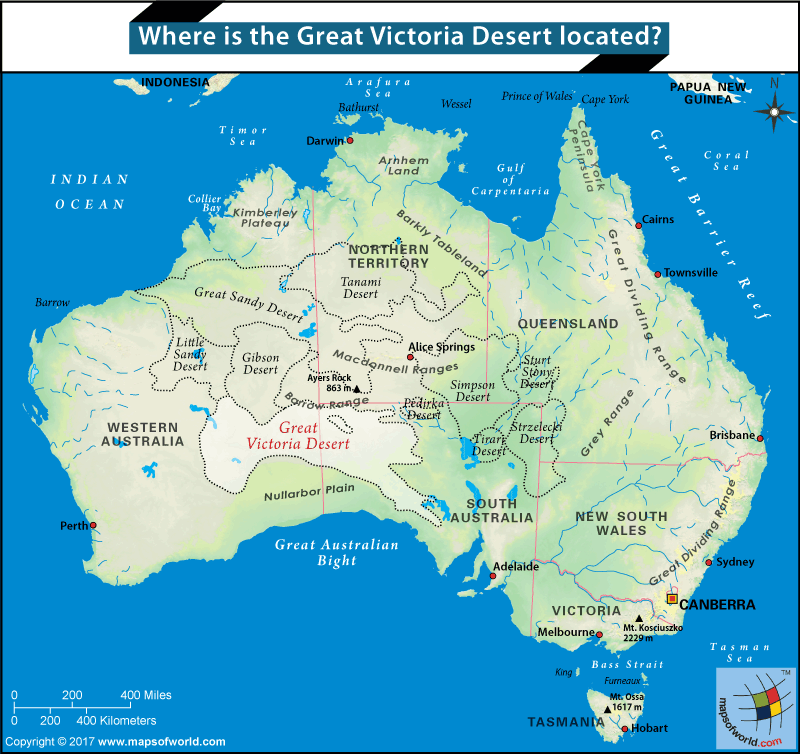Great Victoria Desert

The Great Victoria Desert is a large dry area in the southern part of Australia. It was named after Queen Victoria by Ernest Giles who was a British explorer and was among the first Europeans to travel across it in 1875.
About Great Victoria Desert
Great Victoria Desert is the biggest desert in the country and spreads across two Australian states, Western Australia and South Australia.
The desert has many different kinds of landscapes, each adding to its unique and varied appearance. A few of them are listed below:
-
Sand Dunes
One of the standout features of the Great Victoria Desert is its big stretches of sand dunes. These dunes line up in the same direction in which the wind usually blows. The wind keeps moving the sand around, making wavy patterns on the dunes. The sand varies in color from deep red to bright orange, which adds bright and lively colors to the dry landscape.
-
Grasslands
Even though the desert is a tough place to live in, it has areas of thin grasslands where tough types of grass, like spinifex, grow well. These spinifex grasslands are important because their deep roots help in holding the sand dunes together and provide a home for different kinds of wildlife that have gotten used to living in the desert.
-
Gibber Plains
Another special part of the Great Victoria Desert is the gibber plains. These are large, flat areas covered with small, shiny stones called gibbers. These stones are often full of iron, which gives them a dark, glossy look. They have been smoothed over thousands of years by wind and water. The gibber plains are very empty and only the strongest plants and animals can live there.
-
Salt Lakes
The desert is home to many salt lakes, which are usually dry and covered with a layer of salt. These lakes can look like bright white plains shining under the sun. After it rains, these lakes might temporarily fill with water. The salt lakes show just how extreme the desert’s weather can be and how little rain it gets, only occasionally and in small amounts. Lake Breaden is one of the salt lakes which borders the desert.
How Big is Great Victoria Desert?
It covers about 424,400 square kilometers (163,900 square miles). The desert spreads over two states, starting in the eastern part of Western Australia and reaching into the western part of South Australia. This huge desert takes up a big part of the middle-south area of Australia and includes various dry landscapes.
Interesting Facts
- From 1953 to 1963, the British and Australian governments carried out nuclear tests at Maralinga and Emu Field.These tests caused long-term problems, including radioactive contamination that has affected both the people living nearby and the environment.
- Because it is far away from cities and there isn’t much light pollution, the Great Victoria Desert is a great place for stargazing. The skies are very clear and dark, making it easy to see stars, planets, and other space events really well.
- The Great Victoria Desert is significant to several Indigenous Australian groups such as the Pitjantjatjara, the Yankunytjatjara, the Kokatha, and the Mirning people. These communities have lived in and connected with the desert for thousands of years. It holds deep cultural and spiritual importance for them.
Related Links

